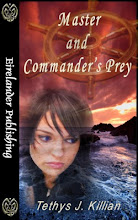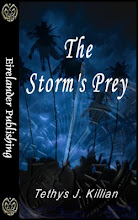Heroines come in all shapes, sizes, colors and personalities. Some are the perpetual good-girl where as others tend to go off on a rant with the least provocation. I'm sure we all know people who are like this. These people have real lives. They may enjoy their day to day experiences and take great joy in being nothing more than a name in the phone book.
The fact is, life isn't all that interesting and a character that never changes is a bit predictable. Who wants to read about a heroine who is forever in the kitchen or vacuuming the carpet? Okay, so you ramp up the characterization—polarize her. You take your poor, very real heroine to an extreme where you think she's got enough interest to keep the story active. She's so good the church is considering making her a saint. She's a bitch and doesn't give a damn. She's a bit on the pudgy side and always harps on her Rubenesque curves with a sour or depressed attitude (cliché).
That makes sense, right? Wrong.
Readers pick up stories to be entertained. They want that certain element of, 'yeah, she's a bitch', but they also want to see some softness at some point in the story. They want to see the good girl lose her cool, maybe even curse a time or two. They don't necessarily mind a full-figured girl who's looking for love. But, they aren't as prone to want to hear her whine all the time about her weight. These are things to keep in mind. You can take it too far.
This is where a character arc becomes important. If you can visualize an arc, you can write a character arc. There are authors who draw their arcs after the first draft when they can see the characters growth in the story. There are others who plot the arc points before hand. What the arc should show is the miniscule changes in the heroine as she works through the GMC (goal, motivation and conflict). Some might be huge changes, but don't always throw a massive change at your readers. Normally an abrupt shift without the back points reads, well, abrupt and illogical.
A good example is the classic 'hate turns to love' romances. The basic plot is man vs. man. But if you can think of a character arc for a heroine in these stories it would simply state.
- Hate
- Love to hate
- Hate to love (like) – this is the major arc point.
- Love
Not so hard.
The simple formulation of an arc can be done for almost any plot though it might have more points. What this can do is help you to make your characters appear real.
Until next week, cheers and happy writing,
T.J.





.jpg)
.jpg)






1 comment:
Hi T.J.,
Great post. I think readers want a heroine they can relate to. Someone with their flaws or life problems so they can see how they solve their troubles and reach the HEA.
Hugs,
Sandy
Post a Comment